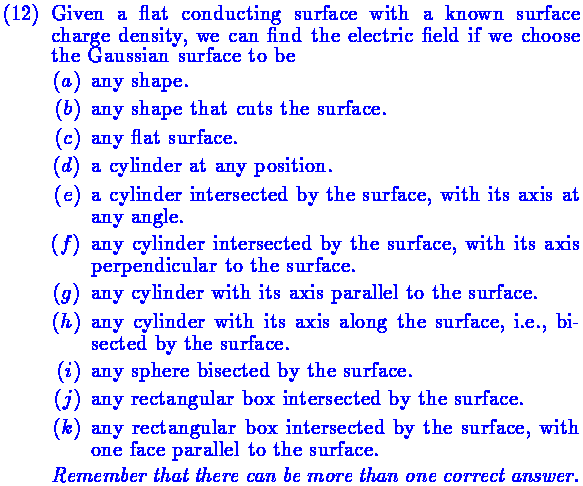


ONLY (f) AND (k) ARE CORRECT Two important requirements for our Gaussian surface are (1) that it have sidewalls where E never has any component normal to the sidewall (and so this part makes no contribution to the electric flux); (2) that it have a flat top and bottom surface whose A vector is parallel/antiparallel to E. It doesn't matter what shape the top and bottom surfaces have, so there are many equally acceptable choices, including a circle (corresponding to the Gaussian surface being a cylinder), or a rectangle (corresponding to the Gaussian surface being a box), or many others.
